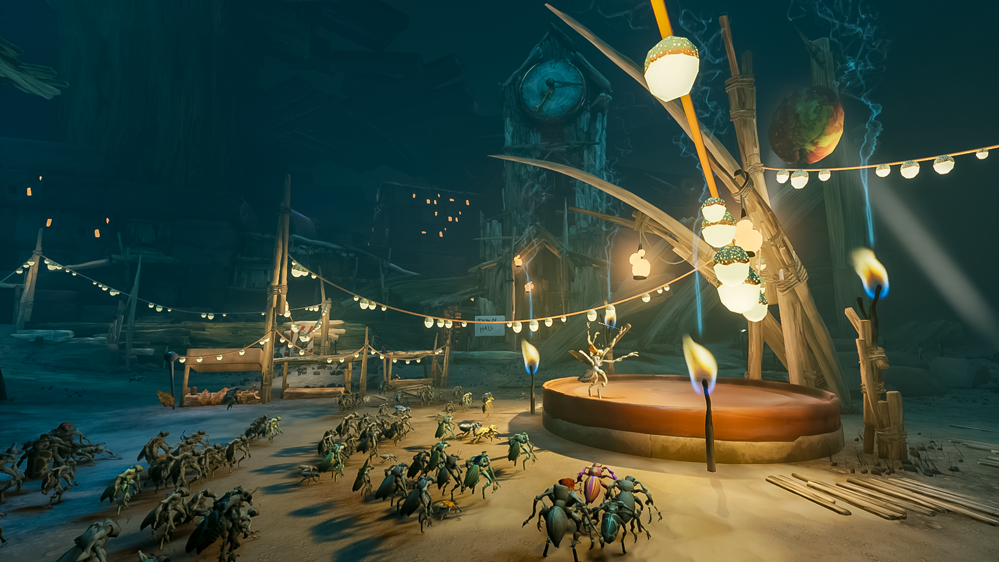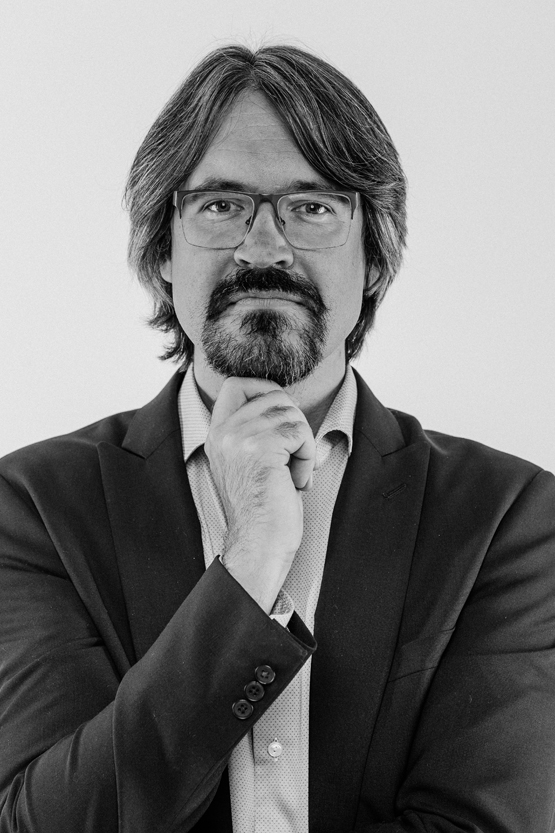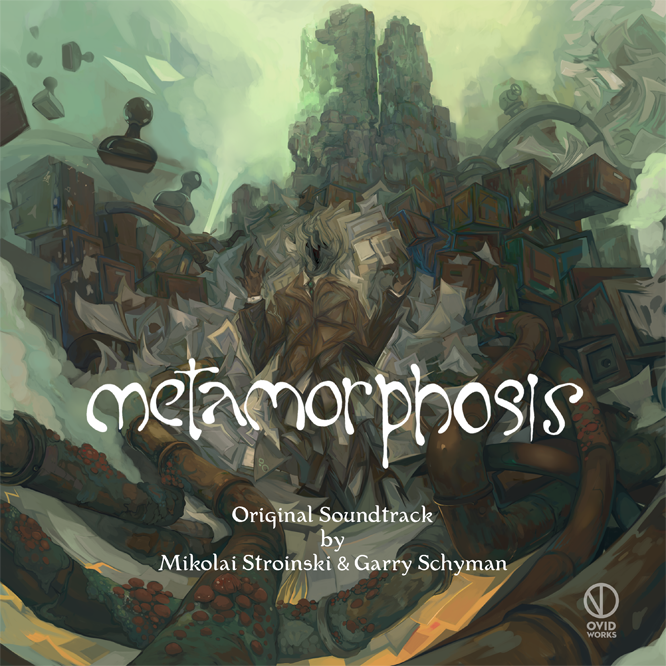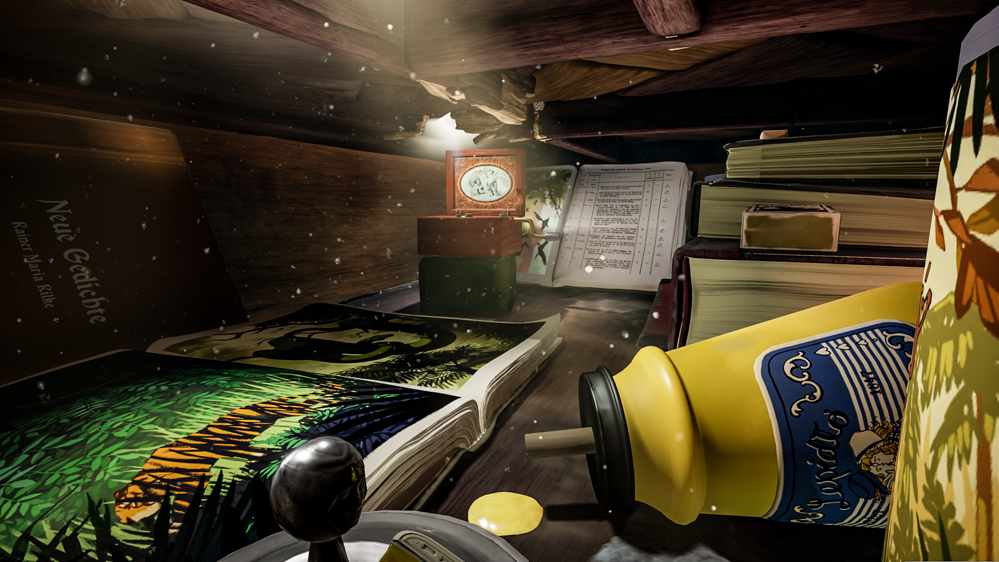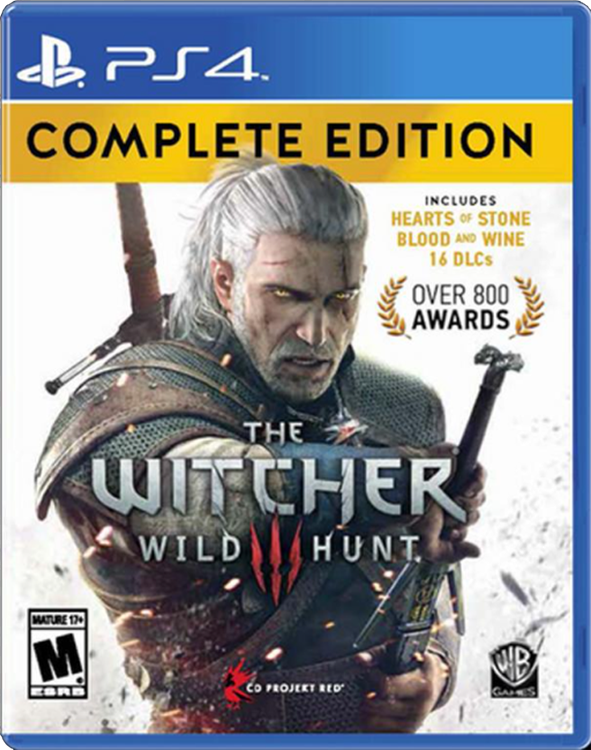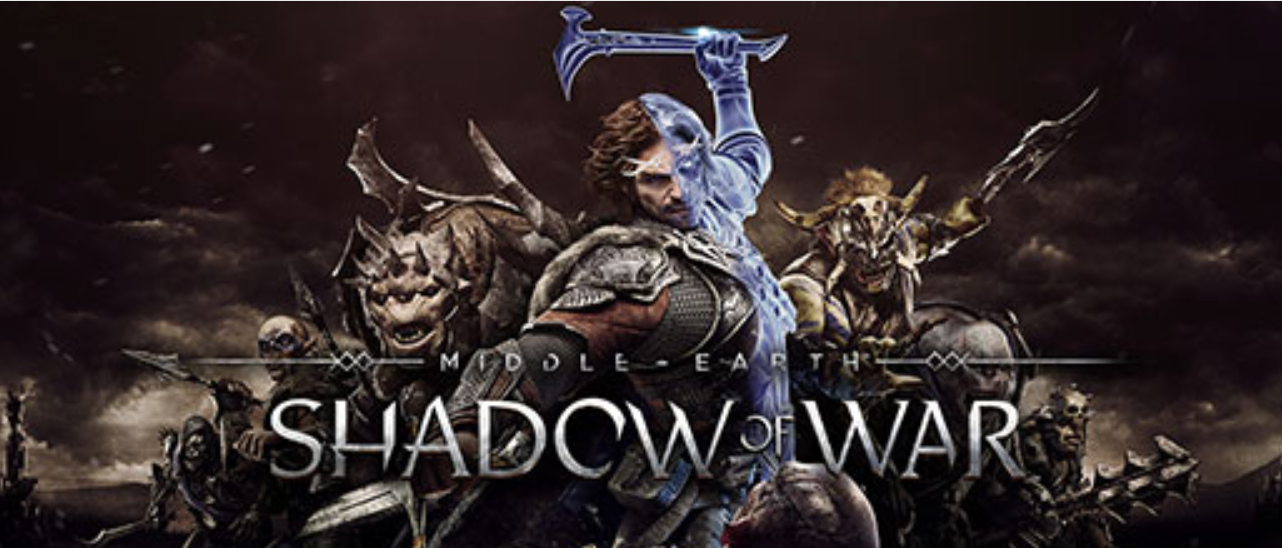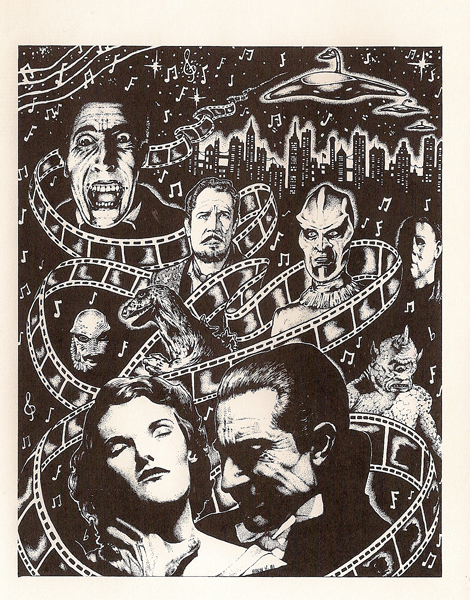October 28, 2020
INTERVIEW:
The Bug Game: Mikolai Stroinski & Garry Schyman Score METAMORPHOSIS Video Game
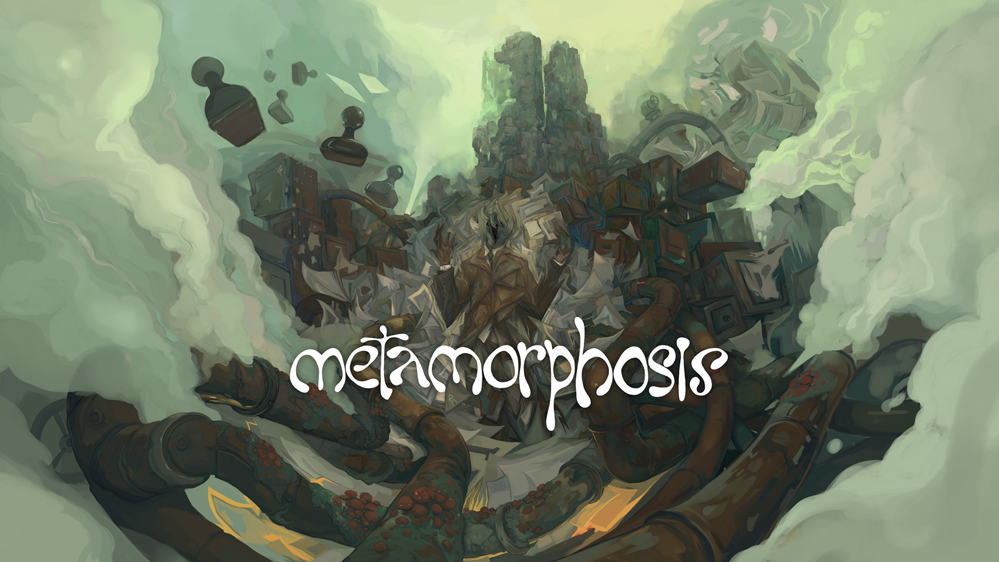
Interview by Randall D. Larson
Based on the famous 1915 Franz Kafka novella, METAMORPHOSIS is a video game developed by Ovid Works in which players become Gregor, turned into a tiny bug and set out on an extraordinary journey to unravel the mystery of his transformation. The game is a first person adventure set in a surrealist world where your newfound abilities are your last and only hope for redemption. Popular game composers Mikolai Stroinski (THE WITCHER 3) and Garry Schyman (BIOSHOCK, DESTROY ALL HUMANS!) have collaborated to compose the score to the game. “This very unique game takes place in a bizarre and nightmarish world inhabited by insects and a corrupt bureaucracy,” said the composers. “The game gave us an astonishing opportunity to write music inspired by the expressionist era of art and music in the early 20th century. Composers Arnold Schoenberg and Alban Berg, as well later composers such as Bernard Herrmann were inspirations. We incorporated techniques of the era such as Sprechgesang (half spoken half sung), 12 tone, aleatoric, tonal and atonal harmonies to invoke a past age that worked perfectly for the world of METAMORPHOSIS.”
The game is now available via Steam. For more details and the game trailer, see https://metamorphosisgame.com/.
Q: How would you briefly describe the story and gameplay of METAMORPHOSIS and how you’ve used music inspired by the expressionist period in which Kafka wrote his novella to form your musical design?
Mikolai Stroinski: The story is about the protagonist waking up one day and gradually turning into a bug. It’s a complicated and mysterious situation for him that we have to solve. Gradually, as we become a bug, we go into the bug world and start communicating with bugs and go through this very abstract, very crazy Kafka-derived world as we try to solve this mystery. The music has two main inspirations: one is, like you said, expressionism from Arnold Schoenberg, and the other one is Bernard Herrmann inspired. The expressionistic part illustrates the bug world. It happened because Garry started writing for this particular area of the game and he came up with using twelve-tone technique, which really worked well. At the same time I was illustrating with music parts around this bug world with Bernard Herrmann-inspired music.
Garry Schyman: Obviously the book, “Metamorphosis” by Kafka, was written in this really unique period where German expressionism sprang into the German world. He was a Czech Jew, but he wrote in German and was very much a pat of this really interesting period of art. So as soon as I heard that and I saw a little bit of the material I just though, this really seems expressionistic to me. How cool it would be to write an expressionistic score, because it’s such an interesting period of music—and of course I’ll never, ever get to write anything in that style again, because it’s just so unique. But we were both responding to the game—I don’t like to shoehorn in any kind of style based upon some wish for opportunities but it just seemed to make sense. Also, this singing style, Sprechgesang, which is half-spoken/half-sung, has this ironic quality to it, and the game developer, Ovid Works, did not want a super serious game. It has very serious aspects to it—but it also has this irony and sense of humor to it. Kafka’s name itself has become “Kafkaesque,” which means this sort of crazy, bureaucratic insanity that he describes in some of his novellas, so it just seemed to fit. The part of the game that I was working on, I used both 12-tone but also really used tonality as well. Some of the cues, as I listen now, and maybe more inspired by Kurt Weil than Schoenberg, but certainly Schoenberg as well. So it was just a delight to find this game and have this creative freedom that is gave us.
Q: How did it come about that you each composed segments of this score? The music definitely has a unified sound?
Garry Schyman: The original project was something that Mikolai had been invited to join, and he invited me. The game developers are Polish and Mikolai was living in Warsaw at the time, so it just made sense to split the cues up because they divided nicely between this bug world and this complex human world, and I got most of the bug music. The cool thing about it is that our music meshes quite nicely. Even though we’re each using a slightly different style, it made sense, sort of serendipitously. I don’t think I was even conscious of it—maybe you were, Mikolai—but if I did one section in my style, and then he does his in his style, it functioned almost perfectly to represent the two aspects of the game.
Mikolai Stroinski: Surprisingly, Bernard Herrmann and Arnold Schoenberg are a good match, even though their harmonies are quite different. How did it all mesh? We used the same sound palette, for one thing. We shared themes among each other of course. We wrote them independently, but they had a very similar melodic structure, so Garry gave me his themes and I gave mine to Garry and we put them on top of our own music. That was one factor that made the score sound cohesive. Another one, obviously, is the vocal, a very important factor in the score, sung by Joanna Sreszel. Like Garry said before, she sang in this Sprechgesang style, which is not an easy technique. Her voice is so unique that it really binds everything together. We used orchestra, recorded in Macedonia.
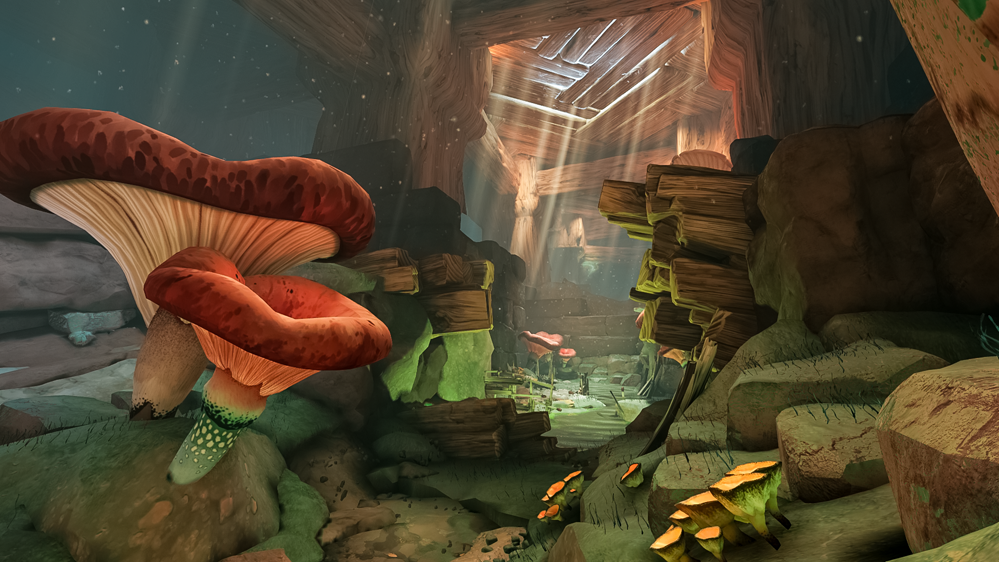
Q: The game, essentially, lets the player become Kafka’s cockroach and experience life as a six-legged crawling creature—and how did you treat that musically?
Mikolai Stroinski: It’s a twisted situation that’s reflected in twisted music. The music has to keep you on edge and maintain certain tensions throughout the game. There is no point where the score is putting a period, like at the end of a sentence. Another thing is orchestration, which is very much oriented around the sound that you hear or imagine you hear, being in the bug world. There are these creepy little sounds, there are tremolo sounds, flutter tongue sounds, and other orchestral techniques that resemble insect wings, and then other similar vocabularies that associate with the world of insects. And then there is something grandiose about the themes—they’re fairly spread out and I think it related to us being small and seeing everything as large all of a sudden. And on top of that the Sprechgesang also helped the situation with something twisted and weird and uncommon.
Garry Schyman: I used some orchestration techniques that were sort of aleatoric. I brought them in to create these creepy, crawling eerie insect wing-like kind of sounds. I tried to use some effects that I felt had that kind of a vibe, as translated into music, and some of the chromatic figures I used felt creepy-crawly. Whether it actually sounds like an insect or not is actually up to the listener, but when you’re writing music like this you try to get your inspiration from the game, and you do your best. If it inspires you to write something, whether it translates or not, it’s a good thing.
Q: The score features really unique use of harp and an intriguing mix of symphonic and synthetic elements in its musical palette. How did this palette came about and how did you use instrumental colors and textures to enhance the gaming experience?
Garry Schyman: I had a palette early on, and to be honest, there was a lot of synchronicity in terms of Mikolai and I, because as he mentioned we both used very similar palettes. Neither of us chose to use a giant orchestral palette—it’s more like a chamber orchestra, and then of course as we selected the live instruments (we didn’t replace all the samples with live instruments), but we both agreed on what instruments were needed. I chose harp, vibraphone, and woodwinds—I really enjoyed using woodwind instruments, especially bassoons or contra-bassoons and of course strings. It just all made sense… you know, so much of what most composers do is intuitive, and those instruments felt intuitively right. Again we had his synchronicity that Carl Jung talks about, we’re very much into how the score should sound and when we shared stuff it was like, wow! I’m not sure why it worked out so well, other than this concept of synchronicity works sometimes—things just sort of gel in serendipitous ways.
Mikolai Stroinski: About this subconscious instinct… It was my instinct to invite Garry, and it turned out we had similar instincts as far as the visuals worked on us, musically, and how the story worked on us musically. I think those are the two factors that contributed mostly to the kind of music we created. You may think that music is intellectual, because of how it was created—the 12-tone music is intellectual, but the goal is to make everything feel natural.
Q: The female vocals used throughout both of your cues for the score are delightfully intriguing and weird, using the Sprechgesang technique you mentioned. Are there specific lyrics being sung or intoned or is it a pattern of vocalise?
Mikolai Stroinski: We had a different approach as far as choosing the lyrics. Many, many years ago when I was in high school I was studying German, so on my end I had to relate to those old times with the help of Google Translate. I was choosing words that would reflect what was on the screen, what was possible in the small brain of the bug we are experiencing. Garry, from what I remember, had a different approach…
Garry Schyman: Yeah. All of the words that Joanna sings are German, and of course Kafka wrote Metamorphosis in German, so I actually grabbed bits here and there from the book. I had a student from a year or two ago, Robert Wolf, who is German, and he helped me find the just the right lyrics from Kafka to use as the lyrics Joanna sung.
Q: You are both veteran game composers with a long legacy of major game scores. What was most unique and/or challenging about this particular project?
Mikolai Stroinski: All of it was unique—not much of it as challenging! It was pure, inspired fun. I believe the score sounds very unique; and of course the game itself is based on a unique world. I don’t know of any other Kafka-based games! Originality triggers originality. As far as challenges, I’m not sure. It was fun but it was a disciplined fun—it’s not like we could do anything, you know, slam a keyboard with a fist or something! There still had to be a structure and a certain order to the music, and it is there.
Garry Schyman: I have cooperated with other composers before, but this was unique. Because it wasn’t a big Triple-A game, it freed us up. The game developers chose us—well, they chose Mikolai initially and then were happy to have me included—because they respected our work, so they gave us a lot of freedom. It was very much a delight to work on this project. It felt effortless—I don’t mean to say that we didn’t work really hard on the score, I think we did! But it just sort of poured out, so there wasn’t the pressure of, say, a big Triple-A game with lots of committees approving music or anything. Pretty much, they dug whatever we were writing, and there were very few revisions. One time there was a note, like “don’t get too serious, we want to keep a sense of ironic humor,” and that helped me to make sure it didn’t get too frightening. It wasn’t a horror game, it was a creepy, eerie, ironic sort of intellectual game. The music I wrote came very easily and quickly, and it all seemed to fit so nicely. And then, Joanna came in and we added her voice—that was the icing on the cake because she did such a fantastic job. Mikolai found her and directed her, so I owe all that to him. I’ve worked on projects that were like pulling teeth, but this one was not.
Q: Mikolai, you’ve scored several of THE WITCHER video games—this was obviously before the Netflix series began, but there is a loose relationship between the franchise. What can you tell me about scoring the WITCHER games you did and how you created a sonic palette for the character?
Mikolai Stroinski: I scored THE WITCHER 3 WILD HUNT, and then I scored the expansion, BLOOD AND WINE. On the first one, part of the color was thanks to the band called Percival. They were recorded live and CD Projekt bought all the rights from their pre-existing music, and on top of that they recorded new material just for the game. So I was able to put my hands on those recordings and add more musicians to those and do some more work with that. I believe we owe a thanks to them for at least the originality of the color. It was hours and hours of music and I had help from my friend Marcin Przybylowicz. A lot of themes, a lot of music. It was a long collaboration; it took us two and-a-half years to do everything—in batches; there were breaks. For BLOOD AND WINE we decided to incorporate the colors of Gypsy and French music, mostly using an accordion, and staying away from some of the colors that were prevalent in the original WITCHER movie. We used different vocalists and all that.
Q: Also, I understand you’ve got new film project coming up?
Mikolai Stroinskiy: Yes, it’s not a game, it’s a four-episode animated miniseries on Netflix called THE LIBERATOR, which is coming on November 11th. The plot takes place during the 2nd World War and it’s about an American army unit, the 157th regiment, who travel from Sicily to the heart of Germany, it’s actually based on real events. Each episode is about 50 minutes, and it gave me a chance to write some interesting orchestral music that I’m very proud of.
Q: Garry, you’ve also scored many films. What do you find unique between scoring a video game and scoring, say, a fantasy or thriller movie?
Garry Schyman: I enjoy scoring to pictures, although very often with video games you’re also scoring to picture, because there are a lot of in-game movies, and that’s a lot like scoring a film. On MIDDLE-EARTH: SHADOW OF MORDOR and SHADOW OF WAR I scored about an hour’s worth of movie files in both of those. But it’s not quite the same as scoring a film, where you’re finding themes for characters and using them throughout. Of course the first two-thirds of my career was film and television music, exclusively. So it’s a familiar world and I enjoy it very much. I will say this, though, games have afforded me a more interesting creative palette—like METAMORPHOSIS, the perfect example of just a really interesting game, or BIOSHOCK, SHADOW OF MORDOR, SHADOW OF WAR, or TORN—any of those, the scores that they’ve needed were so much more creative… unfortunately, in our current environment a lot of film and television scores are very ambient. Not all—there is some wonderful work being done. But so much of the time we’re finding sound design that fits. As a composer, I like composing! I certainly use sound design and I’m happy to, but if there’s no actual compositional challenge, I find that much less interesting.
Mikolai Stroinski: I’m with Garry on that!
Q: Do either of you have any final words or advice to would-be composers looking at scoring games or films?
Garry Schyman: If you’re a composer who looks for opportunities to do something really unique, go for it. We certainly could have played it safe on METAMORPHOSIS and just scored the individual segments, but instead we found the intellectual hook and then we wrote music that fit that, which was much interesting to do. That’s the key to having a fun and creative career. I think it also gives you creative opportunities. I don’t want to crank out scores that sound like as lot of other scores out there; doing something unusual is the ticket to finding a long career.
Listen to Garry Schyman’s track “Bug Village” from METAMORPHOSIS:
Mikolai Stroinski: As is satisfaction from doing that! I’ll say what Garry said, do everything to you can stay away from pads! Music is such an amazing force and to dilute it to just something that lingers and has no energy is just a boring world to be in. It’s not only about scoring project after project but hopefully saying something interesting with music, whenever you can. Games definitely give you this opportunity and if you’re able to do it with movies and TV series and still make them interesting and great to watch then it’s a win-win.
Special thanks to Greg O’Connor-Read of Top Dollar PR for facilitating and coordinating this interview. Game environment screen shots (c) Ovid Works, via TopDollar PR.
Listen to Mikolai Stroinsk’s track “The Letter” from METAMORPHOSIS:

